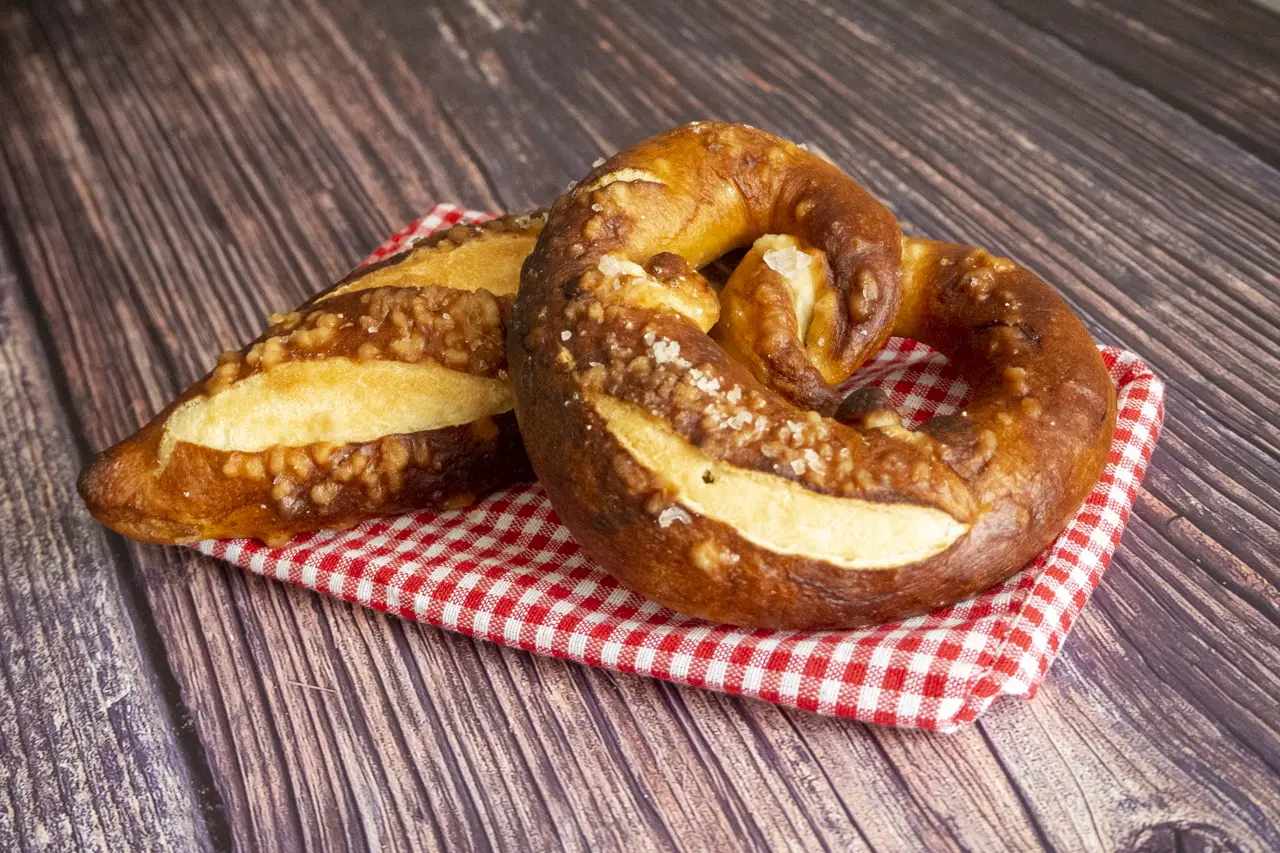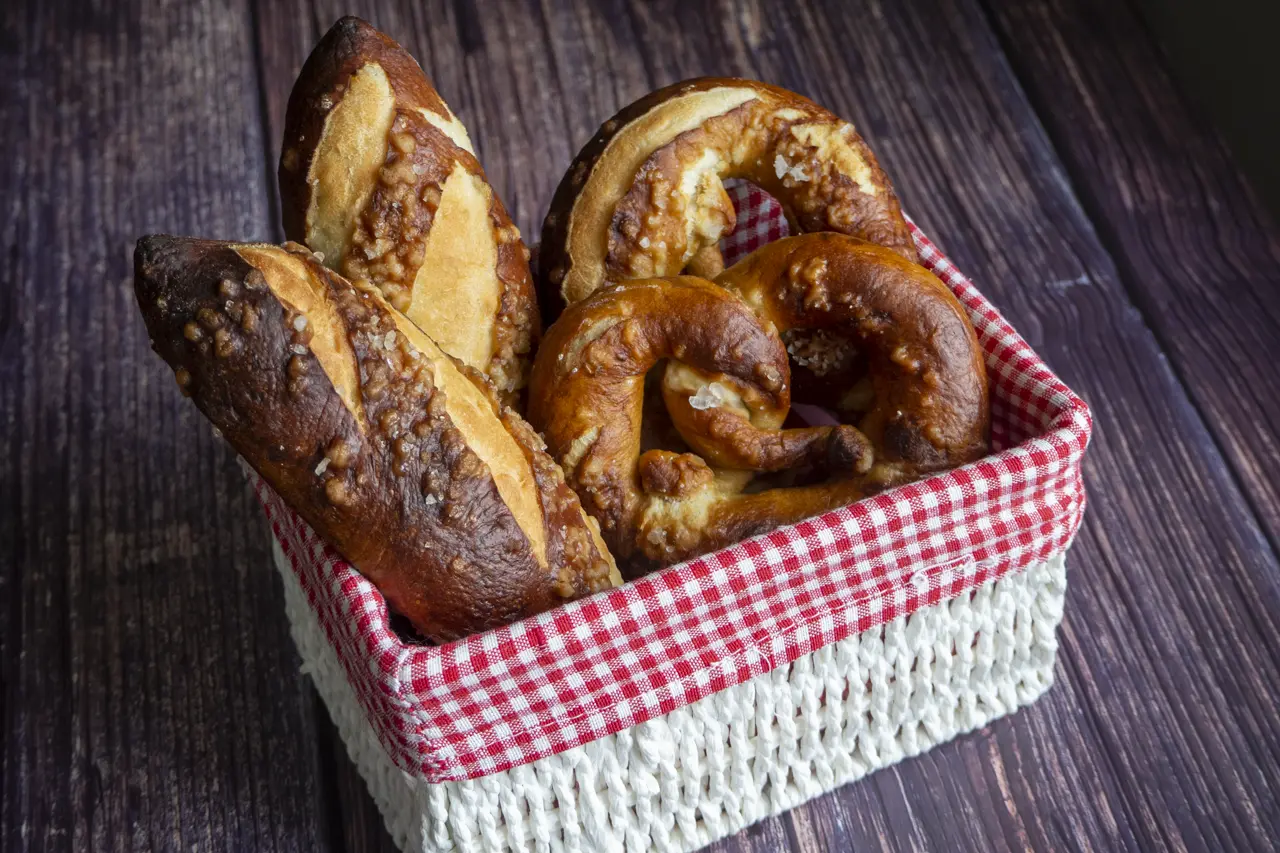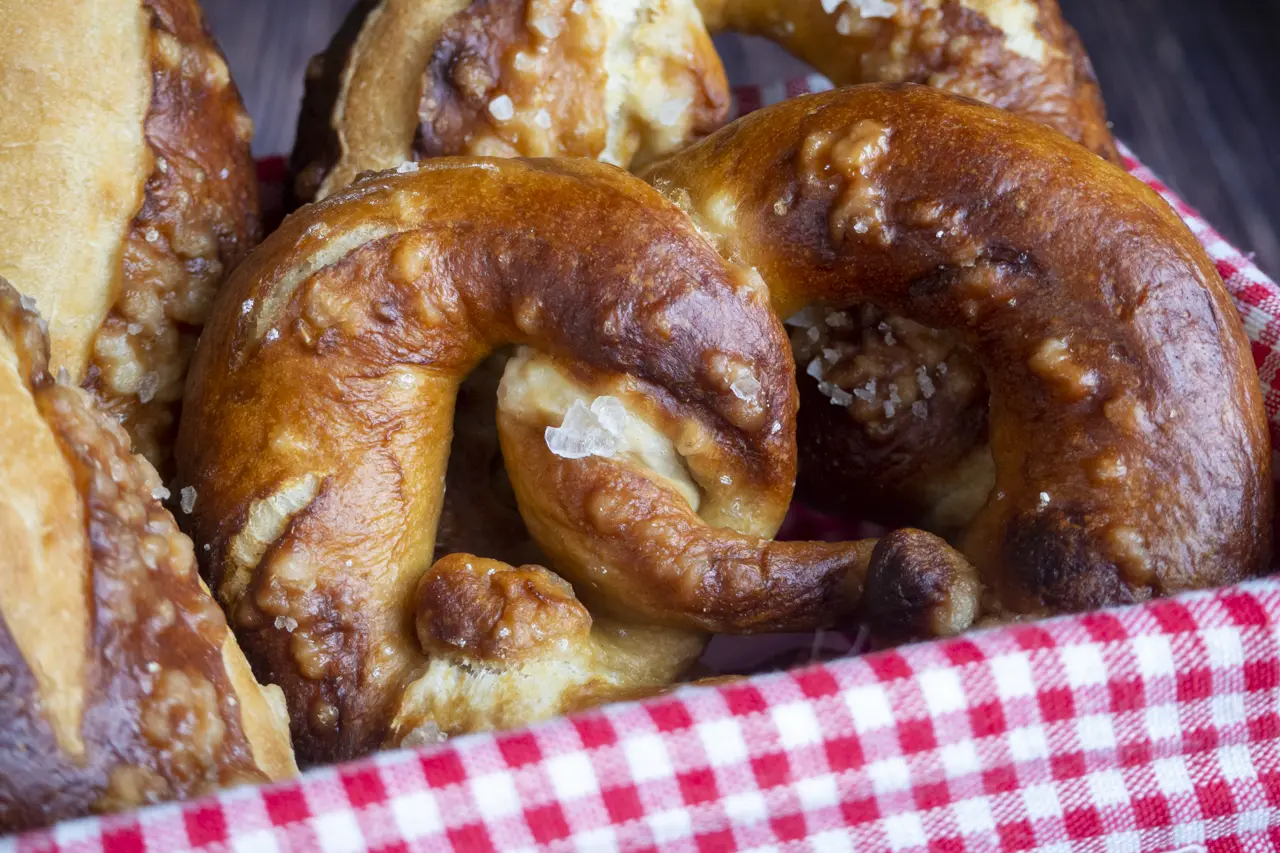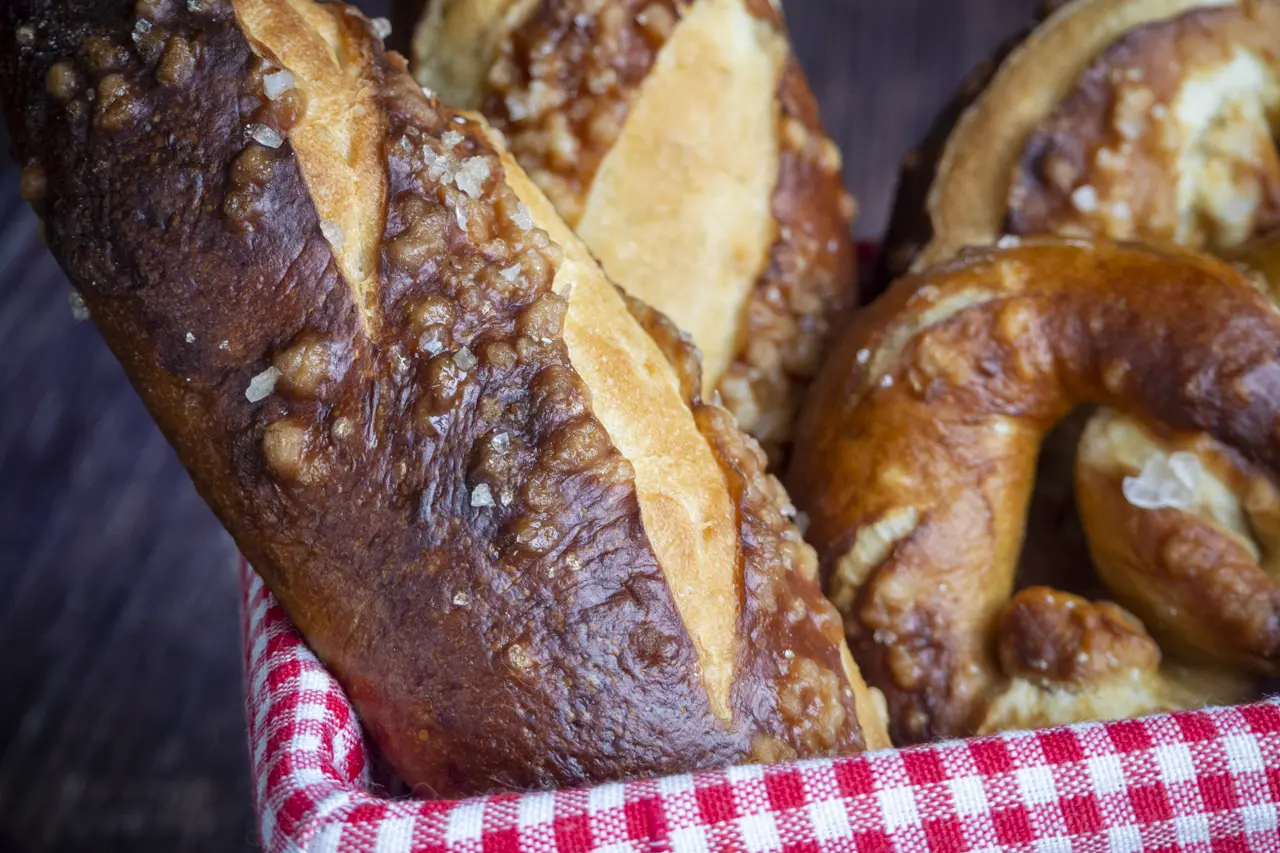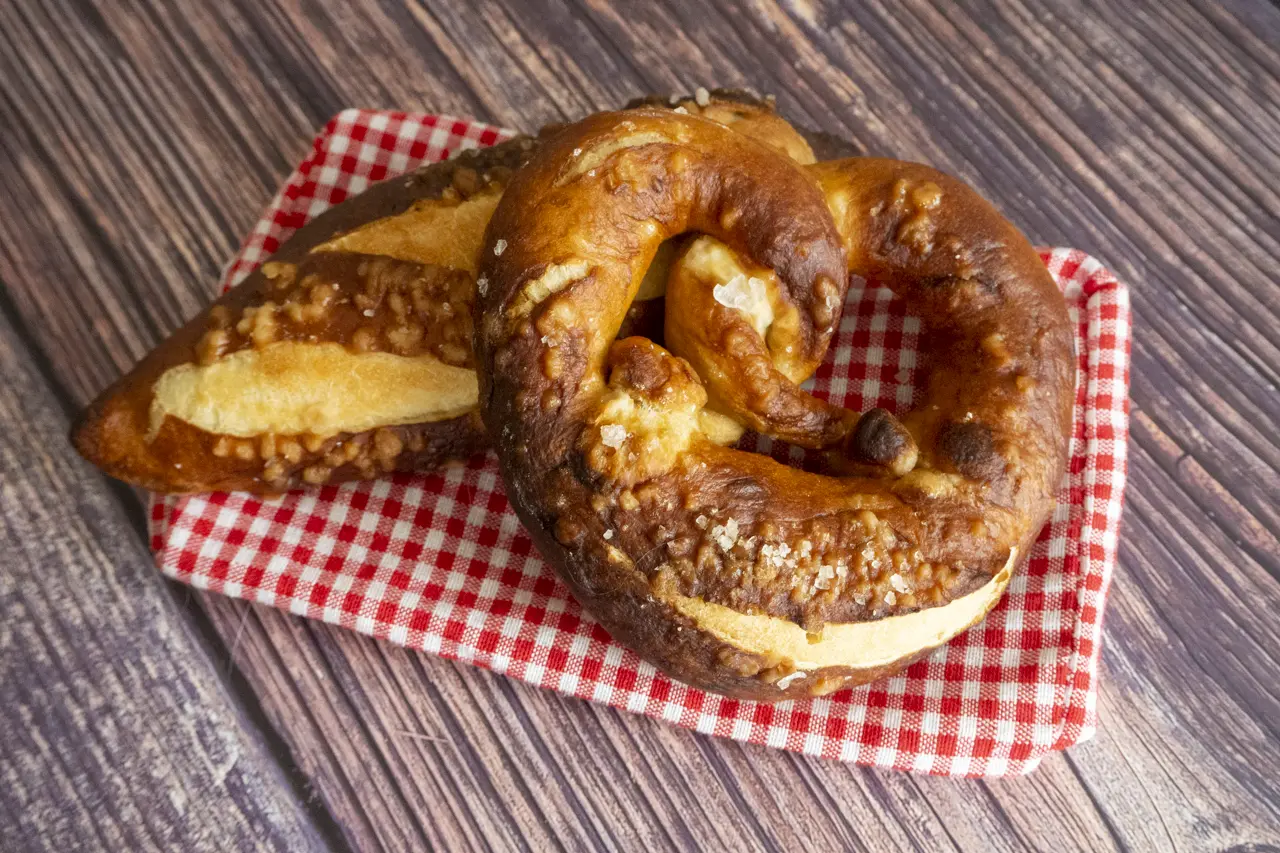Pretzels
4h
8 servings
I work for a Munich-based company and have been to the capital of Bavaria several times, even during Oktoberfest. But while I don't partake in the beverage the festival is most known for, I still appreciate the culinary aspects of it: Obatzda, different kinds of sausage, Spätzle, Knödel and of course, the good old German pretzel. It's a little bit more involved than a normal bread recipe, given the need to pre-cook the dough in an alkaline water bath, but the en result is well worth it. There's nothing like bitting into a freshly baked pretzel.
This recipe has been adapted from My Name Is Andong.
Ingredients
- 500 g flour
- 7 g dried yeast (usually one packet)
- 15 g diastatic malt powder (see notes)
- 7 g salt
- 30 g butter (softened at room temperature)
- 300 ml light beer (see notes)
Alkaline bath
-
1.5 l water
-
50 g baking soda
Directions
- Mix together all ingredients in the bowl of a stand mixer (make sure to keep the yeast and salt separate for as long as possible, so you don't kill the yeast).
- Using the dough hook attachment of your stand mixer, let the dough knead for about 10 minutes, until it forms a ball and comes easily off the sides of bowl.
- Leave it to rest for about 1 hour.
- Punch the dough down and cut it into 8 equally weighed pieces, then roll each one into a taught ball. Leave them all to rest an additional 10 minutes.
- Form the dough into the desired shapes: for baguettes, form them into logs with slightly pointed ends; for pretzels, first roll the ball into a log, then keep rolling it thinner and thinner at the ends, until you get a rope about 65 cm long, that's thicker at the center and becomes thinner towards the ends. Create an inverted U shape with the rope, cross the two rope ends two times, then bring the crossed part up to the bottom of the U shape and press the ends into the dough.
- Transfer the pieces onto a baking sheet and put it in the fridge for 1 hour to rest and slowly ferment.
- Preheat your oven to 220°C (if you have the option, use the convection/fan-assisted setting).
- Bring 1.5 l of water to a boil, then add the baking soda. The water should start violently bubbling, like a just-opened soft drink.
- Boil each pretzel/baguette, one by one, in the alkaline bath for about 1 minute, until it floats to the top of the water. Scoop it up with a mesh strainer and leave it to drip off any excess water on a wire rack.
- Put the pre-cooked pretzels/baguettes on a parchment-lined baking sheet (leave at least 5 cm of space between them, these will expand in the oven) and lightly brush them with the hot alkaline solution from the boiling step (don't overdo it, there shouldn't be any water dripping onto the parchment paper). Sprinkle rock salt atop and score along the thickest part of the pretzel or three almost vertical lines for the baguette.
- Put in the oven and bake for around 15-20 minutes, or until dark brown in color and an internal temperature of at least 88°C.
Notes
Diastatic malt powder or baking malt is something I hadn't heard of before and hadn't even come across any other bread recipes until this one. It's what some call the "secret ingredient" professional bakers use to make their breads look and taste extra good. The powder contains active enzimes that promote the yeast's growth (giving your dough a better rise) and a little bit of a destinct aftertaste. If you don't have this, you can simply replace it with the same amount of sugar, though your pretzels might come out a little bit lighter in color because of it.
If you don't want to use beer, you of course don't have to, you can simply replace it with the same amount of water. Do note though that the dough itself won't taste of beer nor will it contain any alcohol after you bake it. It helps with the rise, but the pretzels will be just as delicious if you decide to replace it with water.
When rolling out the dough: Be sure to work relatively fast and don't keep rolling it with your hands for too long, because the dough will get too warm and therefore too sticky to handle. If this happens, you'll have to reshape it into a ball and leave it to rest for an additional 10 minutes, then try again.
Gallery
